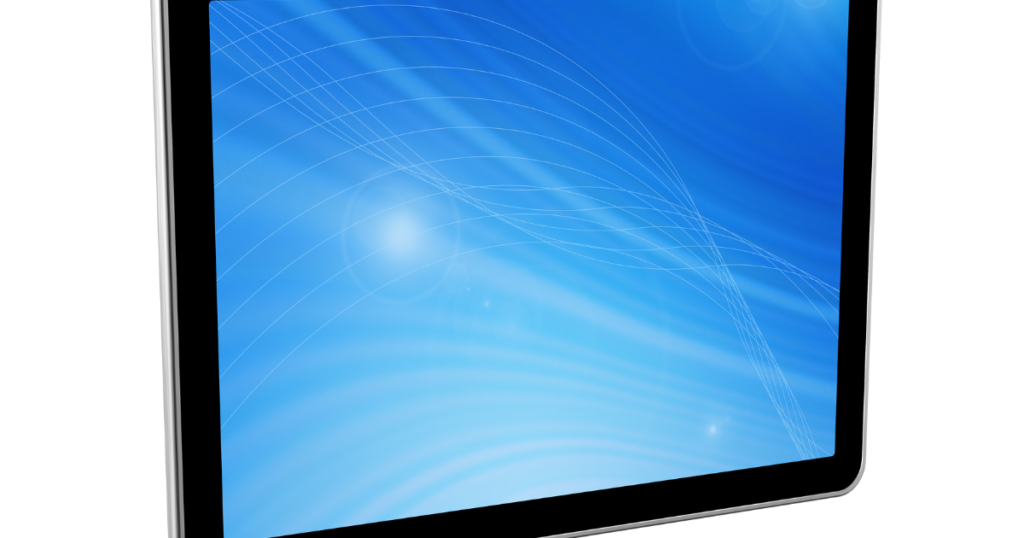We’ve all been there—you pick up your iPad, power it on, and boom, little white dots staring back at you. Annoying, right? Before you freak out and start budgeting for a new screen (or worse, a whole new iPad), hold tight. You can fix this, and better yet, you can do it without replacing your screen. Let’s walk through everything you need to know, step by step.
iPads are renowned for their crystal-clear Retina displays, offering users an immersive experience with sharp images and vibrant colors. However, when white dots suddenly appear on the screen, users are left puzzled — is it a hardware issue, or just a temporary software glitch? In this article, we explore the possible causes, diagnosis techniques, and solutions for white dots on an iPad display, empowering you to resolve the issue with confidence.
Understanding the White Dots Issue
White dots on an iPad screen typically present as small, bright specks that remain static or flicker regardless of what’s being displayed. These anomalies can vary in size and intensity and may be more noticeable on dark backgrounds. Some users also describe them as looking like dead pixels, while others notice them moving or shifting subtly.
Understanding the origin of these white dots is essential in determining whether your iPad is suffering from screen damage, a manufacturing defect, or a software issue.
What Are White Dots on an iPad Screen?
White dots—also known as stuck pixels, pressure points, or sometimes even dead pixels—are tiny bright spots that stay fixed on your screen, no matter what you’re viewing. They’re especially noticeable on dark backgrounds.
Why Do White Dots Appear?
Dead Pixels
Dead pixels are tiny areas on your screen where the pixel no longer functions. These are usually permanent, but sometimes they’re just stuck and can be revived.
Pressure Damage
Ever accidentally pressed your iPad screen too hard? Or dropped something on it? That pressure can mess with the LCD layers, creating bright, white marks.
Software Glitches
Not all white dots are hardware-related. Sometimes, the issue is buried deep in the system files or caused by a buggy app or update.
Common Causes of White Dots on an iPad Display
1. Stuck or Dead Pixels
One of the most frequent causes of white dots is pixel malfunction.
- Stuck pixels remain in one color (often white) and can sometimes be resolved with pixel-refreshing software.
- Dead pixels, on the other hand, are completely non-functional and usually appear black but may appear white if the backlight leaks through.
This issue often originates during the LCD manufacturing process and can be either temporary or permanent.
2. Backlight Bleed or Pressure Marks
White dots may appear due to pressure on the screen, especially if the device was dropped or stored under heavy items.
- Localized backlight bleeding can create bright spots that look like white dots.
- These are typically caused by pressure marks on the LCD layers, especially in edge-lit displays where the light source becomes uneven.
3. Software Glitches or Display Rendering Bugs
Sometimes the issue lies not in the hardware but in the software rendering pipeline. Bugs in iPadOS, certain apps, or display drivers can lead to white artifacts appearing intermittently.
- iOS updates occasionally introduce temporary graphical glitches, which can manifest as white dots or lines.
- Improper rendering due to app conflicts or memory leaks can also result in display anomalies.
4. Screen Burn-In (Rare on iPads)
While rare, screen burn-in can create residual images or white ghost spots from static content. This is more common in OLED displays, but some iPad models with advanced LED backlighting may show similar effects over time.
5. Dust or Debris Under the Screen
In rare cases, dust particles trapped during assembly can reflect light in a way that looks like a white dot. These are usually fixed spots and don’t change or flicker.
Initial Diagnosis and Checks
Before jumping into fixes, let’s play detective for a sec.
Restart Your iPad
Yes, the classic “turn it off and on again” trick. It sounds basic, but it solves a surprising number of tech problems.
Perform a Screen Test
Use a screen test tool or app (there are plenty of free ones) to check if the white dots appear under all conditions.
Observe the Pattern of White Dots
- Are they always in the same spot?
- Do they disappear during boot?
- Do they change when you rotate the screen?
These clues help you determine if the problem is hardware or software.
How to Diagnose the White Dots on Your iPad
1. Perform a Pixel Test
Use a free online screen test tool to display solid colors (red, green, blue, black, white) on your iPad. This can help:
- Identify stuck pixels: They’ll stand out on solid backgrounds.
- Determine whether the dots remain static or change with screen content.
2. Check in Safe Mode
Boot your iPad in safe mode or with minimal apps running. If the white dots disappear, the issue may be software-related rather than hardware-based.
3. Update or Restore iPadOS
Ensure your iPad is running the latest version of iPadOS. If the issue persists:
- Try a factory reset (after backing up your data).
- Restore using iTunes or Finder to eliminate any corrupted files or bugs.
4. Examine for Physical Damage
Inspect the iPad for:
- Cracks in the screen
- Pressure marks from drops or impacts
- Uneven lighting when the screen is white
These signs point to hardware issues that require professional repair.
Software Solutions
Update Your iOS
Apple releases updates to squash bugs, including display issues. If you’re behind on iOS versions, it’s time to update.
Reset All Settings
This won’t delete your data, but it resets settings like brightness, wallpaper, and Wi-Fi. Go to Settings > General > Transfer or Reset iPad > Reset > Reset All Settings.
Use Pixel Fixing Apps
These apps cycle colors rapidly, which sometimes “jog” stuck pixels back into action.
Best Pixel Fix Apps Available
- Dead Pixel Test and Fix
- JScreenFix (browser-based)
- PixelHealer (via PC)
They’re not guaranteed, but they’ve worked for many users.
Manual Techniques to Fix White Dots

Gentle Screen Massage
Take a soft cloth and gently rub the affected area in small circles. This sometimes helps the liquid crystals in the screen realign.
⚠️ Warning: Don’t press too hard, or you might cause more damage!
Using a Warm Cloth Method
Warm (not hot!) cloth applied to the spot for a few seconds can help if the pixel is just stuck due to temperature imbalance.
Tapping Method for Stuck Pixels
Using your finger or a capped pen (wrapped in cloth), lightly tap the spot. The idea is to reactivate the pixel by physical stimulation.
Preventing Further Damage
Use a Screen Protector
A tempered glass protector can absorb minor impacts, preventing future pressure-related white spots.
Avoid Overheating
iPads hate heat. Avoid placing them in direct sunlight or near heat sources for extended periods.
Handle with Care
Don’t throw your iPad onto your bed or couch. Sounds harmless, but repeated impacts can disturb the screen’s internal layers.
When to Seek Professional Help
Apple Support Options
If your iPad is still under warranty or AppleCare+, check with Apple. They may offer a free screen replacement depending on the cause.
Independent Repair Technicians
Local tech experts often offer pixel repair services that are cheaper than full screen replacements. Just ensure they’re certified and trustworthy
How to Prevent White Dots in the Future
- Avoid applying pressure to the screen when storing or cleaning the device.
- Use a quality case to protect the iPad from physical damage.
- Keep the software updated to minimize the chance of rendering glitches.
- Avoid exposing the device to extreme heat or pressure.
Conclusion: Hardware or Software? It Depends.
White dots on an iPad display can be caused by multiple factors, ranging from harmless software glitches to more serious screen damage. By carefully analyzing the symptoms and testing the device, you can determine the underlying cause and take appropriate action.
For temporary issues, a reset or pixel fixer may suffice. But for permanent screen damage, especially from physical impact, a professional repair or replacement is often the only viable solution..
White dots on your iPad screen can be frustrating, but they’re not a death sentence. With a few easy tricks and some patience, you might be able to fix them yourself without spending a fortune. Whether it’s a stuck pixel, a software bug, or minor pressure damage, your screen can bounce back. And even if it doesn’t, you’ve got options before jumping to a full replacement.



